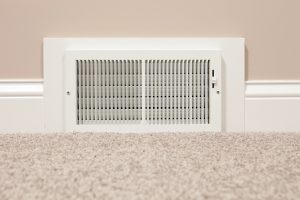 With heating season rapidly arriving, now is the time to give your furnace a close look and check for any problems that might occur. We’re using our heating systems these days, but the weather is still comparatively warm. That lets you observe any issues the furnace may have and get them addressed before the weather gets too cold later this winter.
With heating season rapidly arriving, now is the time to give your furnace a close look and check for any problems that might occur. We’re using our heating systems these days, but the weather is still comparatively warm. That lets you observe any issues the furnace may have and get them addressed before the weather gets too cold later this winter.
One common symptom of trouble is reduced airflow: warm air moving out of your vents more slowly than you’d expect. It sounds minor, but it actually signals a significant problem.
What Causes It?
Low air flow is usually caused by one of two general issues:
- Blockages, which could be a crimp or build-up in your ducts, clogged air filters, foreign objects in the heater, or sometimes a breach in the ducts pulling warm air out of the system.
- Power problems, which translate to trouble with the fan motor, the fan belt, or perhaps the fan blades themselves. In this case, they can’t blow the hot air into your home with the power required.
Why Is It a Problem?
The issue is a problem mainly because it slows down the rate at which your furnace warms the home. That means it burns more fuel–forcing you to pay more in monthly bills–as well as putting additional strain on the system itself (which elevates the chances of a more serious breakdown).
But it gets worse. In many cases, low airflow means that hot air remains trapped in the system, which can cause individual components to overheat. In most cases, the heater has a safety feature that will shut the furnace off rather than cause important components to overheat. But you still need to deal with the low airflow before you can use your furnace.
If your spot low airflow in the furnace in your Sacramento, CA home, turn it off and call Sierra Pacific Home & Comfort, Inc.
